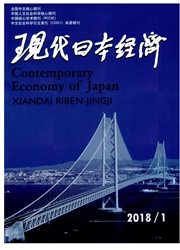

 中文摘要:
中文摘要:
战后日本破解国内工业化、城镇化过程中城乡区域发展不平衡以及振兴农村边远贫困地区经济、社会发展的典型经验是OVOP战略的应用和实施,其区域内生化发展的模式成为亚洲、非洲等世界众多国家激发农村创造经济发展动力、繁荣农村经济的效仿模式。通过探究日本OVOP战略的发展背景、发展历程、主要措施、特点及成效,在当前世界经济快速发展的背景下,对中国及亚洲各国目前的新农村建设发展提供了有效经验,并为系统解决"三农"问题给予一定的启发和重要的借鉴。
 英文摘要:
英文摘要:
In Japan's postwar history, the implementation of OVOP strategy led to improved urban - rural re- gional development imbalance in the process of industrialization and urbanization and revitalization of economy and society of rural remote regions. Japan~ regional endogenous development pattern has become a model fol- lowed by Asian, Africa and many countries around the world to stimulate the creation of rural economic and rural economy prosperity. This paper explores the Japanese O~OP strategy development background, process, major initiatives, characteristics and implementation effectiveness, which gives conductive experiences to Chi- na and other Asian countries in building a new socialist countryside under the current context of rapid develop- ment of world economy, and provides vital reference for resolving the problem of "Three Rural Issues".
 同期刊论文项目
同期刊论文项目
 同项目期刊论文
同项目期刊论文
 期刊信息
期刊信息
